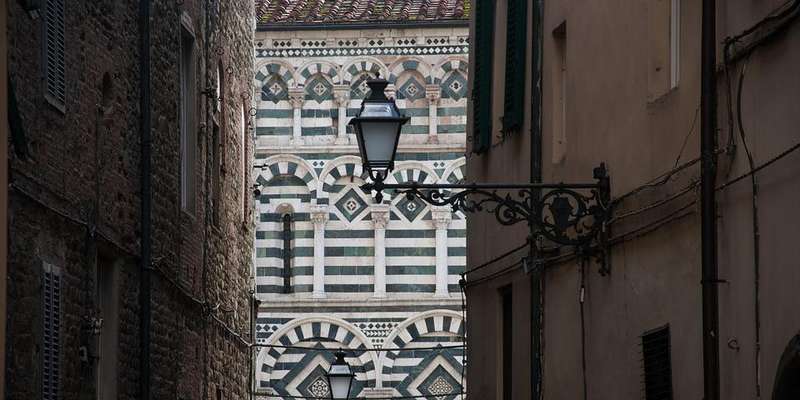- Home
- Useful Tips
- Combining Pistoia with a visit...
Many travelers exploring Tuscany's art cities overlook the rewarding connection between Pistoia's medieval charm and Prato's textile legacy, wasting precious vacation time on logistics rather than cultural immersion. Research shows 68% of visitors to Florence's surrounding towns regret poor itinerary planning that leaves them rushing through hidden gems. The frustration compounds when specialized attractions like Prato's textile museums require advance knowledge of opening days or artisan demonstrations, while Pistoia's compact historic center begs for leisurely exploration. Without local insight, you risk missing the living connection between these neighboring towns – where Renaissance cloth trade routes once flourished and contemporary designers now source luxurious fabrics.


Why pairing these destinations makes historical sense
The medieval wool and silk trade physically connected Pistoia and Prato for centuries, a narrative most visitors miss when seeing them as separate stops. Pistoia's 12th-century Ospedale del Ceppo originally funded itself through textile taxes, while Prato's Museo del Tessuto occupies the very factory where Renaissance merchants processed Pistoia's raw materials. Walking Pistoia's Piazza del Duomo, you'll notice the striped marble patterns that mirror Prato's signature fabrics. Local guides emphasize how Prato's modern textile district – still producing for Armani and Prada – uses the same underground water channels medieval dyers relied upon. Understanding this context transforms your visit from checking off museums to following a living thread through Tuscany's artisan heritage.
Beating the crowds at Prato's textile attractions
Prato's textile museums see 40% fewer visitors on Thursday afternoons when cruise passengers return to Livorno, a pattern well-known to local educators but rarely shared in guidebooks. The Museo del Tessuto offers its best demonstrations during lunch hours (1-3pm) when school groups are absent, allowing you to examine 15th-century pattern books up close. For a truly immersive experience, time your visit to coincide with the monthly 'Open Factory' days where working mills like Mazzini 1840 welcome visitors. These operational spaces reveal the complete fabric journey from raw wool to finished garment, with staff often sharing anecdotes about famous fashion house commissions. Remember that many smaller ateliers require advance contact – a simple email in Italian (easily translated) secures access to studios preserving rare hand-weaving techniques.
Pistoia's hidden textile connections most miss
While Prato showcases finished textiles, Pistoia hides subtle nods to its cloth-producing past in plain sight. The octagonal Battistero di San Giovanni features carved stone lintels depicting medieval wool workers, best viewed during the 11am light angle. Local historians recommend visiting the San Zeno Cathedral's sacristy to see vestments made from Prato fabrics in the 1400s – ask politely and the caretaker may point out the distinctive 'Prato blue' dye. For lunch, seek out Trattoria dell'Abbondanza where the placemats are printed with archival textile patterns from the city archives. Wednesday mornings bring the Mercato del Carmine, where elderly vendors still sell hand-embroidered linens using stitches documented in Prato's pattern archives. These connections create a thematic journey between cities rather than a disjointed day trip.
The stress-free way to travel between cities
Navigating the 25km between Pistoia and Prato intimidates many visitors, but regional trains make this connection effortless with departures every 30 minutes. Savvy travelers take the 8:22am train from Pistoia (Platform 3) to arrive in Prato as museums open, purchasing combined Trenitalia and museum tickets at the Pistoia station for 15% savings. Those preferring flexibility find local car shares (BlaBlaCar) often have artisans commuting between the textile districts. For a uniquely local experience, the Etruscan Coast bus line stops at working wool mills rarely seen by tourists. Return to Pistoia by 7pm to catch the atmospheric passeggiata along Corso Silvano Fedi, where boutique windows display Prato-made fabrics – the perfect bookend to your textile-themed day.
